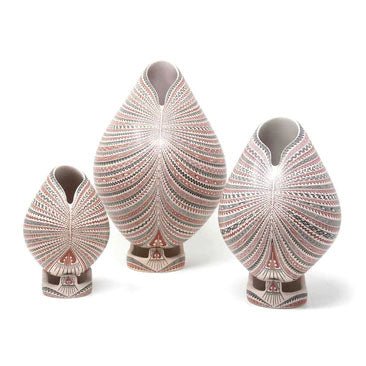What is Mata Ortiz Ceramics?

Origin of Mata Ortiz pottery
Juan Quezada was the one who became interested in the art of pottery, having his predecessors as teachers, from whom he observed the designs left by the Sum Indians throughout the Casas Grandes area. The clay models that abounded in the area made it possible to take white clay from Cerro del Indio and around Anchondo, brown and red in the convent area, ivory near Corralitos and black in the nearby hills.
So, experimenting with ceramics it was that it began, extracting mud in the hills and streams, elaborating paint with ground rocks, with very fine mud and with any material within reach. They burned the pots in a traditional way on three stones, placed a piece, covered it with cow dung and set it on fire. Some cracked, others cracked but several were well cooked, and thus the technique improved.

Part of the artisanal burning process of the ceramics.
Then they integrated the charcoal, which they lit in a square sheet metal pot with holes on the sides. They placed the pot in the center, and the mud melted, with fewer holes they tried again, and it exploded. The pieces preheated and then exposed directly to the fire is how they finally managed to survive.
Other techniques in the clay
The incredible beauty of graphite burned at very high temperatures was discovered by signing a pot with a pencil and burning the piece. There they saw that the name shone a lot and then soon the graphite dust was removed from the school pencils and the pots were shiny as a mirror. Then they began to buy commercial graphite that is worked with diesel to adhere it to the clay.
Later they added a layer of black paint at the beginning, then the graphite went and thus they were able to paint bright colors on a black background, giving rise to pieces of great quality and bright colors.
Different techniques applied in the pottery of Mata Ortiz.
There are also artists who obtain the pigments by grinding colored stones in a manual mill and filtering different clays, for which they use very fine fabric blankets, the paint resists the heat of the fire and with the right temperature it shines better.
Source: Art, Clay and Tradition, by Javier O. Urquidi



